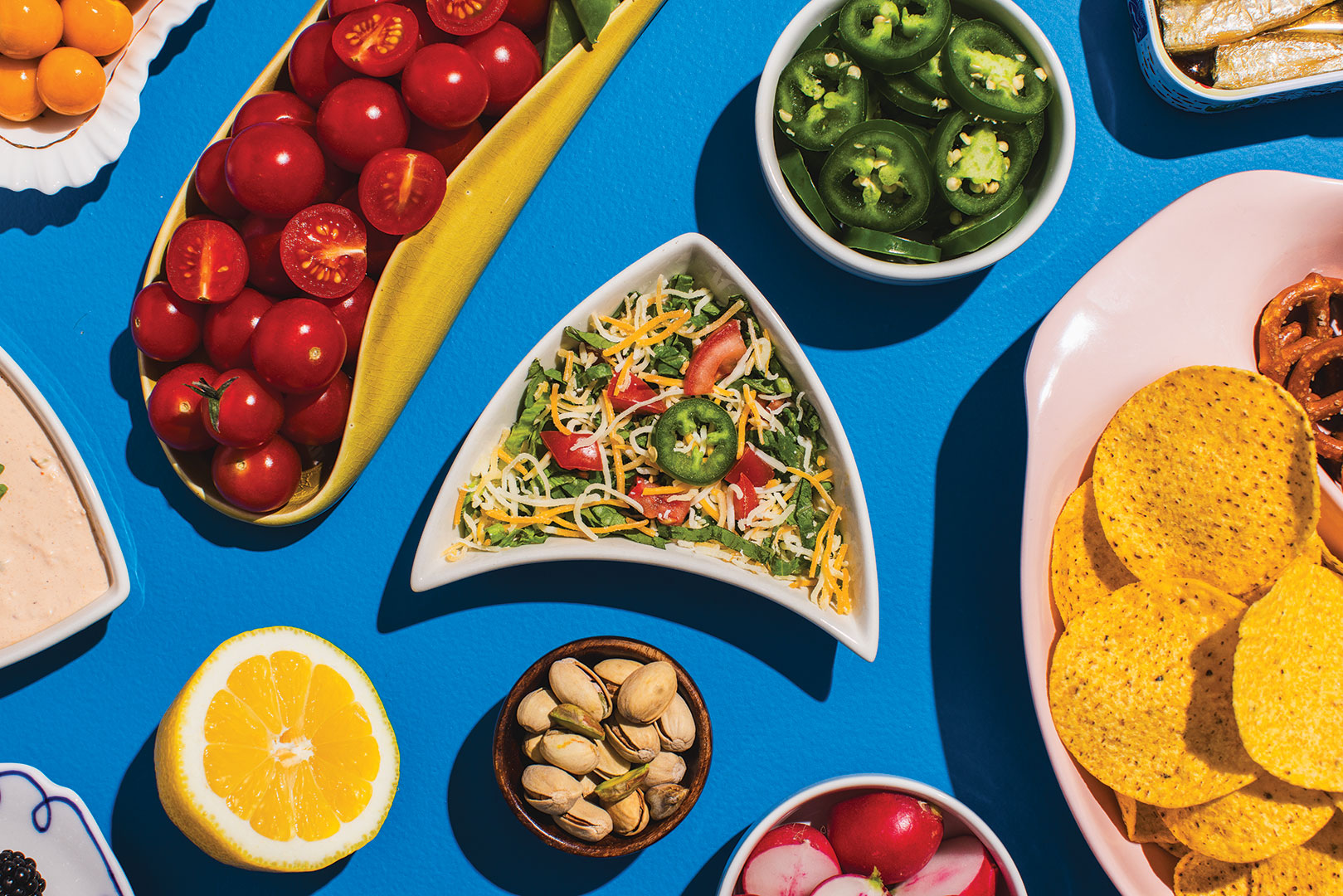
Saree handcrafted in: West Bengal, India; Weave style: Vintage Swarnachuri silk saree with pure gold thread; Earrings: @mn.make. Photos: Chris Emeott
Cheryllyne Vaz learned in late 2019 that she had a brain aneurysm. What started as slight swelling in her neck progressed further, and after an overnight stay and an MRI, doctors discovered two side-by-side aneurysms over her left lobe. From that point on, and as she learned more, Vaz realized how important self-advocacy, education and community would become on her journey—especially among other women.
Last year, Vaz knew of five different women who died from ruptured brain aneurysms. All the women were from minority communities and mothers, like Vaz, and none of them knew they had aneurysms. They brushed off symptoms, like many people do, as just a headache. After the women died, Vaz realized she had to take action.
“Those five women were a sign. I started my research; I wanted to learn what causes aneurysms,” she says. “I started getting angrier and angrier. Why are women dying, leaving their family behind? I came up with creative ways to start talking to people, and that’s when I thought of just wearing a saree and talking about the facts.”

Saree handcrafted in: Assam, India; Weave style: Silk saree with embroidered Parijat (jasmine) flowers; Earrings: @e.floyd_earrings
Vaz came up with a yearlong campaign she’s calling #366DaysOfSaree. Every day, she wears a different saree, a traditional Indian garment of loosely draped, colorful fabric. In wearing the saree, Vaz opens up conversations with people and connects, shares her story, and educates people about aneurysms.
“When people stop to say, ‘Oh, what a lovely saree. What are you wearing?’ Then I have the chance to talk to them about why I’m doing it. I speak to at least one person every day, and my job is done,” Vaz says.
She posts her sarees on social media and has unexpectedly developed a following. “When you start something, the universe opens up for you,” she says. “I didn’t realize this whole legion of Indian women supporting me, saying, ‘We didn’t know about this.’ They started sending emails and DMs, telling stories of their mother, aunt, grandmother who died. And then sarees started showing up on my doorstep as gifts … One lady sent it all the way from England. That’s when I realized how far the story was spreading. I never expected strangers to pay attention.”

Saree handcrafted in: Maharashtra, India; Weave style: Paithani silk saree; Earrings: @chosen_and_free
September is National Brain Aneurysm Awareness Month, and the Brain Aneurysm Foundation shares that women are more likely to die from brain aneurysms: Not only is it more common in women, but also because of disparities in how women seek and receive healthcare. Vaz finds this information frustrating and motivating. “Rather than be dismissed by someone else, we dismiss our own concerns,” she says. Preventative screening, self-advocacy and better information can save lives.
By now, Vaz is a bona fide advocate for early aneurysm detection, promoting campaigns for preventative screening and has gone to Capitol Hill in Washington, D.C., with the Brain Aneurysm Foundation for Advocacy Day in March. She and her friend, Cindy Sorensen, a brain aneurysm rupture survivor, alongside Minnesota elected officials, have had conversations together about how to impact change. Recently, elected officials signed Ellie’s Law into place, which honors a 14-year-old aneurysm victim whose headache was dismissed by doctors and who later died as a result. The law advocates for federal funding for brain aneurysm research.

Saree handcrafted in: Tamil Nadu, India; Weave style: Kanchipuram silk saree; Earrings: @obsidianpause_wearablepaperart
“A great call to action would be for people to go to the Brain Aneurysm Foundation website, look up the advocacy page and we ask that everybody click the link and it will send to your representatives, requesting that they support Ellie’s Law,” Vaz says.
Instagram: @cheryllyne.vaz






















